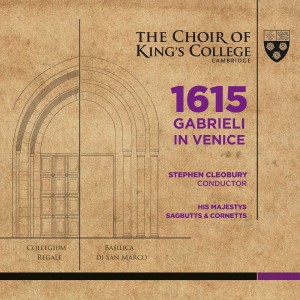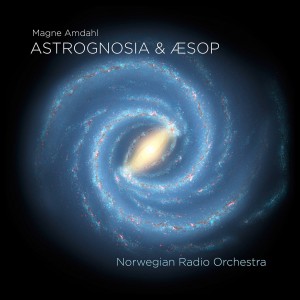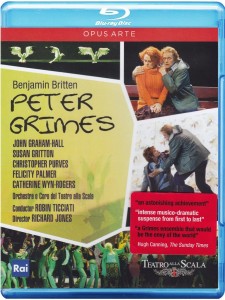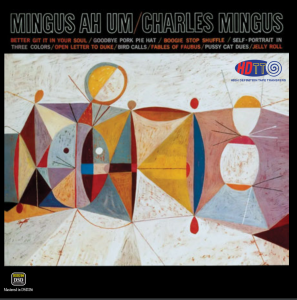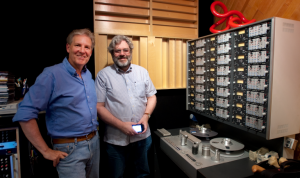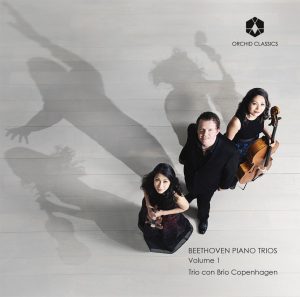Prokofiev, Scythian Suite & Symphony No. 3. Orchestra: Sao Paulo Symphony. Conductor: Marin Alsop. Recording: Naxos NBD0047
There certainly are significant differences in the music composed by Prokofiev compared to those famous Russian composers that preceded him. It is our good fortune to have his compositions available now. Yes, he turned out those compositions needed by performers in the various music halls of the world. That included piano concertos and violin ones also. A few years ago I boasted about a very unusual production of his composition for children's introduction to classical music and the orchestra. With the aid of some famous people, that production of "Peter and the Wolf" was a gem, appreciated by the older generation as well. As I reported some months ago, the latest and probably the greatest production of his version of the ballet "Romeo and Juliet" was released on Blu-ray and was simply outstanding and the best I had ever seen. It may have been bettered Tchaikovsky's ballet featuring the same name and basically the same famous story of the two lovers.
With this well rounded selection of music composed by Prokofiev, the Scythian Suite was first a ballet. The suite wound up being a favorite with being a showpiece with some international orchestras. The three bold movements were a crowd pleaser for quite some time. The entirely separate symphonic sketch autumn with its dark textures was a favorite of Prokofiev who often revised it to his satisfaction. After various interesting and suspenseful passages the conclusion is simply dazzling.
Prokofiev's Symphony No. 3 is a quite successful composition with a great deal of variety and many differing melodic passages. Very upbeat and unusual rhythm passages are almost unique to this symphony, a modern favorite seemingly and highly recommended.
Leo Delibes, Sylvia, Ballet in 3 acts. Choreography: Frederick Ashton. Orchestra: Royal Opera House. Original production first performance: June 14, 1876. This production, first performance: September 3, 1952. Conductor: Graham Bond. Recording: Opus Arte 7047 Blu-ray Disc
Here the famous ballet is restored to the splendor of its elegant and opulent three act form for the 75th anniversary celebration of the Royal Ballet. While young, the French seemed to not place much value on instrumental music, as Delibes on light hearted operettas and farces such as Offenbach had been doing. Eventually, he was commissioned to raise the level of ballet music with two outstanding ballet scores. They were "Coppelia" and based on a story by E.T.A. Hoffman and "Sylvia" based on a mythological theme. Both are still produced occasionally and recorded with some frequency. They are often credited as directly influencing Tchaikovsky's symphonic ballet's mastery. Some many years I was fortunate to attend a unique production of Coppelia in Palm Beach's old, beautiful and intimate theatre, starring actor Jose Ferrar and no, he did not dance the ballet though he added to it immensely.
Jean-Christophe Maillot, LAC (After) SWAN LAKE. Orchestra: Saint Louis Symphony. Conductor: Leonard Slatkin. Recording: OABD 7154 DLAC Jean-Christophe Maillot's "After Swan Lake, Music by Tchaikovsky performed by Les Ballets De Monte Carlo.
This new adaption has reworked this pillar of the classic repertoire bringing a modern day relevance to the story of Siegfried and Odette. Danced to a specifically conceived and mastered soundtrack of Pyotr Tchaikosky's famous score, it is directed by Leonard Slatkin and performed by the Saint Louis Symphony Orchestra. This film of "LAC" won the top award of the 2013 Golden Prague Festival "offering a thrilling interpretation of Tchaikovsky's masterpiece through contemporary dance." "It was filmed in High Definition and recorded in true Surround Sound." You will find it interesting in the extreme and definitely a bit different. It is time to switch to new and different.
Is it New or all Old Over Again?
Well that is a very interesting subject and one that I have pretty well avoided so far. I am almost caught up in it this time and will try to not get hung up on it. What am I talking about this time? It is almost about vinyl recordings versus digital or versus recorded digital discs. Huh, you might ask innocently, "What digital discs?" Without trying to be complete, I will try to cover the subject reasonably well; lots of luck needed for trying.
Being one of the older guys and still breathing, I certainly remember that some of the other older ones were members of a group that was almost constantly knocking vinyl records: I mean violently knocked them! Often justly so. Some often seemed to get few flat recordings or perfectly round ones and so on. Too easy to scratch, too much care needed and so on. Soon touched on sensitivity to tone arm problems, weight and other things. Something new was demanded and the compact disc arrived. Hurrah or not? They were almost indestructible. They did not demand adjustments or other efforts. But, were they; are they just as musical sounding? Is there a still living music lover that has not changed tone arms, pickup cartridges and many other things with recorded playing? By changing or altering the turntable, or its mat or arm or cartridge, which of its ten different sound outputs is the real one? Meditate on that very seriously and pray that discs never need things like tone arms and adjustments.
Some manufacturers placated turntable owners by offering tracking angles of the pickup cartridge and tone arm, different mates for the table and many other things. Where to stop? Well, fortunately, I hope, they decided to make the discs even better from time to time. Instead of making the discs completely new, better and different, they decided to offer a choice. All of us know that the discs area "read" by some sort of laser beam, right? The beams can almost unbelievably read at more than one level/thickness all at the same time! Modern science at work! Why so? While producing a compact disc that holds pits to give us sound without wear—remember that with vinyl, it allows a deeper set or layer of pits! A nice touch is the fact that most started making that other layer with more detail, not only more audio detail but more beautiful video and movies galore. A particularly popular variation was named SACD. Somehow it became a favorite of many. Some swore that it offered particularly good audio quality. (I have not specifically checked to see if those listeners still feel that SACD offers the best now with other competitors such as Blu-ray discs that offer possibly even better or more detail. There is a reason above and beyond why I wrote this article now and it has to do with what some manufacturers are now offering. It is surprisingly not an overall improvement and it may now or later offer a choice for purchaser of new release! Possibly the new simpler choice may offer it at a lower price. Remains to be seen!
1615 Gabrieli in Venice, Giovanni Gabrieli. Musicians: Cornetts-4; Viola-2; Dulcian-2; Organ-3; Sagbutts-8 (baroque trombones). Conductor: Stephen Cleobury. Choir: King's College at Cambridge. Recordings: Disc# 1 – SACD hybrid disc: Compatible with all CD audio for CD players as well as high-density stereo 5.0 surround tracks that can be read by SACD players, a popular choice for many.
Disc # 2 – Pure Audio Blu-ray Disc. Plays back on all Blu-ray players in all regions. 5.1 Dolby True HD. Mastered for CD/SACD and Blu-ray to capture the unique acoustics of Kings College. Manufactured in Austria. Both discs contain the same music. Jeremy West director-Obviously these discs can be used to check on the various recordings available. CD, SAC, and Blu-ray. Audio stream are also available.
Basically everything possible has been done to let any music lover to hear almost exactly what listeners in 1615 heard! Quite some feat that should be appreciated by all. Yes, this should be compared with the new return to discs that offer only the basic music as simply as possible.
Recording philosophy of 2L (Lindberg Lyd) records in spacious acoustic venues; large concert halls, churches and cathedrals. This is where they can make the most intimate recordings. The openness due to the absence of close reflecting walls. A really good recording should be able to bodily move the listener. Immersive Sound is a completely new conception of the musical experience. Stereo can be described as a flat canvas and surround sound as a field, but 3D immersive sound is a sculpture that you can literally move around and relate to spatially. Blu-ray is the first domestic format in history that unites theater movies and music sound in equally high quality. Pure Audio Blu-ray can combine everything with the ease and straight-forward handling of a CD. Yes, 2L Records enjoys their excellent quality reputations.
Magne Amdahl's Astrognosia and Aesop Fables The stars and the sky at nigh have always fascinated people and kindled wonder, faith and superstition. In ASTROGNOSIA we are in the world of Astrology with its interpretation of the year's twelve signs of the zodiac each with its own characteristics. The work is held together by the changing phases of the moon on its journey through the heavens and it is played here by the Norwegian Radio Orchestra. Aesop's Fables is written for narrator and orchestra-here being Dennis Storhol-based on Herman Wildenvey's translation playful re-telling in dazzling rhythmic verse- Recorded in DXD24bit/352.8kHZ pure audio Blu ray disc, SACD.
Antonin Dvorak, Composition: Symphony No. 8. Composer: Leos Janacek. Composition: Jenufa Suite. Orchestra: Pittsburg Symphony. Conductor: Manfred Honeck. Recording: Reference Recordings FR-710 SACD
The Czech composer, Dvorak was influenced by German and American cultures in addition to Czech. In addition to this fine recording, very recent performances at the Kravis center revealed how popular compositions by others of Dvorak's symphonies have been very well received. True, number nine is probably the favorite. Line notes mention passages played by the flute and they are fully realized here. Dvorak's symphonies are nearly all very popular and rightly so. The excellent Pittsburg group is as good as they come as revealed here. Manfred Honeck uses his own efforts here with his favorite excerpts from the opera Jenufa. Not quite the beauty of Dvork though interesting on its own and worthwhile on its own. All in all, a very well performed program by the Pittsburg group. Basically, they are "as good as they get now."
Benjamin Britten, Opera, Peter Grimes. Orchestra: and Chorus Del Testro Alla Scala. Conductor: Robin Ticciati. Directed: Patrizia Carmine for TV and video. Recording: OA B-D7119D (Blu-ray)
The story behind the opera Peter Grimes is seemingly rather simple. The setting could be at many places though the chosen English community seems just right. The sea and the coast set late in the final quarter of the twentieth century fits just fine. Earlier their population had started to run out of work to keep youth busy and working. The character Peter Grimes was a commercial fisherman who hires youth as apprentices when the fishing is good. Sounds good and that works out well and keeps the youthful apprentice busy and out of trouble. However, on particularly stormy day Peter Grimes returns after a stormy day of fishing and he is alone. The apprentice youth drowned in some powerful stormy waves. Eventually some trouble-makers started rumors hinting strongly that Peter Grimes was probably guilty of the lad's disappearance! That is the beginning that with unknowing rumors grows and grows. Just of all the rumors you could think of about the lost lad. Britten thought of most of them. The previously tight knot town starts to crumple; people turn against each other and so on. Where will it end? While watching and listening, you will be able to watch some of the best almost realistic video work that I have seen in an opera in a very long time. That is perhaps due to direction by and for TV and video by Patrizia Carmine. I call the whole production an unforgettable and unexpected gem. Highest recommendation.





